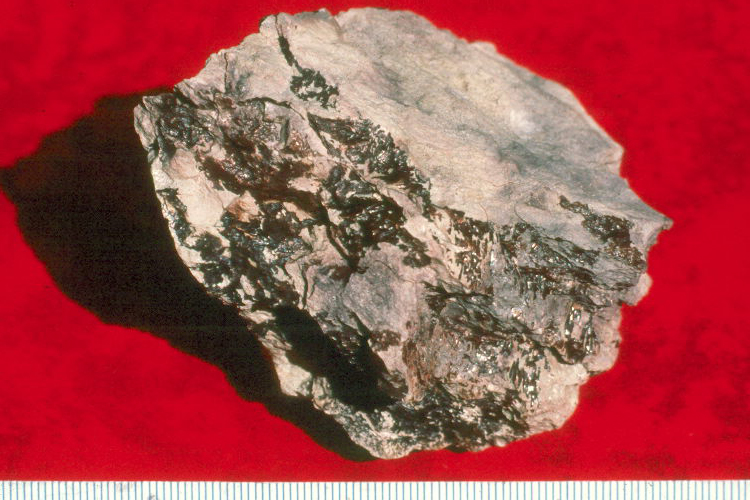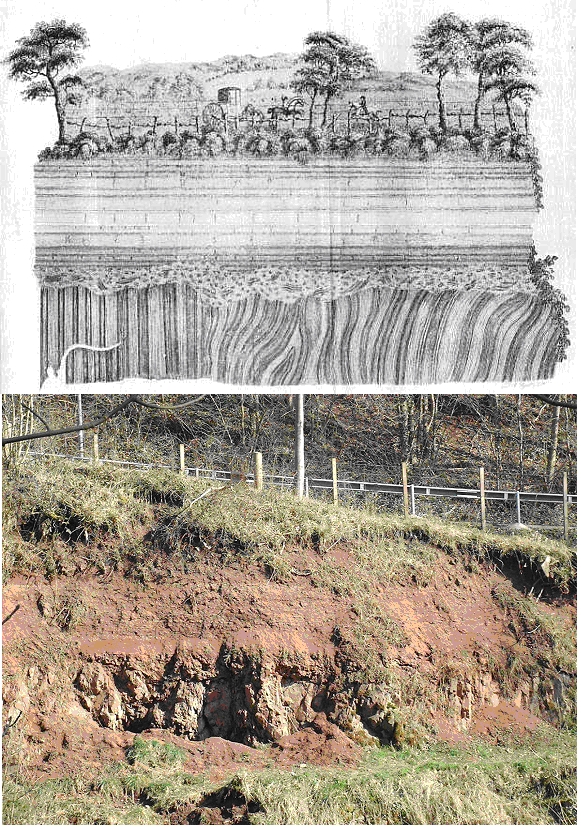|
Candeleros Formation
The Candeleros Formation (formerly known as the Candeleros Member of the "Río Limay Formation") is a geologic formation that crops out in the Río Negro, Neuquén, and Mendoza provinces of northern Patagonia, Argentina. It is the oldest formation in the Neuquén Group and belongs to the Rio Limay Subgroup. Formerly that subgroup was treated as a formation, and the Candeleros Formation was known as the Candeleros Member.Sánchez ''et al.'', 2006 Description The type locality of the Candeleros Formation is Candeleros Hill in Neuquén Province, after which the formation was named by Wichmann in 1929.Wichmann, 1929 This formation unconformably overlies the Lohan Cura Formation, and it is in turn overlain by the Huincul Formation, also a unit of the Neuquén Group. The sediments of the latter are of lighter greenish and yellow colors and the boundary between the Candeleros and Huincul formations is easily recognizable.Leanza ''et al.'', 2004 The Candeleros Formation is almost ... [...More Info...] [...Related Items...] OR: [Wikipedia] [Google] [Baidu] |
Geological Formation
A geological formation, or simply formation, is a body of rock having a consistent set of physical characteristics (lithology) that distinguishes it from adjacent bodies of rock, and which occupies a particular position in the layers of rock exposed in a geographical region (the stratigraphic column). It is the fundamental unit of lithostratigraphy, the study of strata or rock layers. A formation must be large enough that it can be mapped at the surface or traced in the subsurface. Formations are otherwise not defined by the thickness (geology), thickness of their rock strata, which can vary widely. They are usually, but not universally, tabular in form. They may consist of a single lithology (rock type), or of alternating beds of two or more lithologies, or even a heterogeneous mixture of lithologies, so long as this distinguishes them from adjacent bodies of rock. The concept of a geologic formation goes back to the beginnings of modern scientific geology. The term was used by ... [...More Info...] [...Related Items...] OR: [Wikipedia] [Google] [Baidu] |
Rio Negro Province
Rio or Río is the Portuguese, Spanish, Italian, and Maltese word for " river". When spoken on its own, the word often means Rio de Janeiro, a major city in Brazil. Rio or Río may also refer to: Geography Brazil * Rio de Janeiro * Rio do Sul, a town in the state of Santa Catarina, Brazil Mexico * Río Bec, a Mayan archaeological site in Mexico * Río Bravo, Tamaulipas, a city in Mexico United States * Rio, a location in Deerpark, New York, US * Rio, Florida, a census-designated place in Martin County, US * Rio, Georgia, an unincorporated community in Spalding County, US * Rio, Illinois, a village in Knox County, US * Rio, Virginia, a community in Albemarle County, US * Rio, West Virginia, a village in Hampshire County, US * Rio, Wisconsin, a village in Columbia County, US * El Río, Las Piedras, Puerto Rico, a barrio * Río Arriba, Añasco, Puerto Rico, a barrio * Río Arriba, Arecibo, Puerto Rico, a barrio * Río Arriba, Fajardo, Puerto Rico, a barrio * Río Arriba, ... [...More Info...] [...Related Items...] OR: [Wikipedia] [Google] [Baidu] |
Fauna
Fauna is all of the animal life present in a particular region or time. The corresponding term for plants is ''flora'', and for fungi, it is '' funga''. Flora, fauna, funga and other forms of life are collectively referred to as ''biota''. Zoologists and paleontologists use ''fauna'' to refer to a typical collection of animals found in a specific time or place, e.g. the " Sonoran Desert fauna" or the " Burgess Shale fauna". Paleontologists sometimes refer to a sequence of faunal stages, which is a series of rocks all containing similar fossils. The study of animals of a particular region is called faunistics. Etymology '' Fauna'' comes from the name Fauna, a Roman goddess of earth and fertility, the Roman god Faunus, and the related forest spirits called Fauns. All three words are cognates of the name of the Greek god Pan, and ''panis'' is the Greek equivalent of fauna. ''Fauna'' is also the word for a book that catalogues the animals in such a manner. The term was fir ... [...More Info...] [...Related Items...] OR: [Wikipedia] [Google] [Baidu] |
Paleosol
In the geosciences, paleosol (''palaeosol'' in Great Britain and Australia) is an ancient soil that formed in the past. The precise definition of the term in geology and paleontology is slightly different from its use in soil science. In geology and paleontology, a paleosol is a former soil preserved by burial underneath either sediments (alluvium or loess) or volcanic deposits (volcanic ash), which in the case of older deposits have lithified into rock. In Quaternary geology, sedimentology, paleoclimatology, and geology in general, it is the typical and accepted practice to use the term "paleosol" to designate such "''fossil soils''" found buried within sedimentary and volcanic deposits exposed in all continents. In soil science the definition differs only slightly: ''paleosols'' are soils formed long ago that have no relationship in their chemical and physical characteristics to the present-day climate or vegetation. Such soils are found within extremely old continental ... [...More Info...] [...Related Items...] OR: [Wikipedia] [Google] [Baidu] |
Swamp
A swamp is a forested wetland.Keddy, P.A. 2010. Wetland Ecology: Principles and Conservation (2nd edition). Cambridge University Press, Cambridge, UK. 497 p. Swamps are considered to be transition zones because both land and water play a role in creating this environment. Swamps vary in size and are located all around the world. The water of a swamp may be fresh water, brackish water, or seawater. Freshwater swamps form along large rivers or lakes where they are critically dependent upon rainwater and seasonal flooding to maintain natural water level fluctuations.Hughes, F.M.R. (ed.). 2003. The Flooded Forest: Guidance for policy makers and river managers in Europe on the restoration of floodplain forests. FLOBAR2, Department of Geography, University of Cambridge, Cambridge, UK. 96 p. Saltwater swamps are found along tropical and subtropical coastlines. Some swamps have hammocks, or dry-land protrusions, covered by aquatic vegetation, or vegetation that tolerates periodic inundatio ... [...More Info...] [...Related Items...] OR: [Wikipedia] [Google] [Baidu] |
Conglomerate (geology)
Conglomerate () is a clastic sedimentary rock that is composed of a substantial fraction of rounded to subangular gravel-size clasts. A conglomerate typically contains a matrix of finer-grained sediments, such as sand, silt, or clay, which fills the interstices between the clasts. The clasts and matrix are typically cemented by calcium carbonate, iron oxide, silica, or hardened clay. Conglomerates form by the consolidation and lithification of gravel. They can be found in sedimentary rock sequences of all ages but probably make up less than 1 percent by weight of all sedimentary rocks. In terms of origin and depositional mechanisms, they are closely related to sandstones and exhibit many of the same types of sedimentary structures, e.g., tabular and trough cross-bedding and graded bedding.Boggs, S. (2006) ''Principles of Sedimentology and Stratigraphy.'', 2nd ed. Prentice Hall, New York. 662 pp. Friedman, G.M. (2003) ''Classification of sediments and sedimentary rocks ... [...More Info...] [...Related Items...] OR: [Wikipedia] [Google] [Baidu] |
Braided River
A braided river, or braided channel, consists of a network of river channels separated by small, often temporary, islands called braid bars or, in English usage, '' aits'' or ''eyots''. Braided streams tend to occur in rivers with high sediment loads or coarse grain sizes, and in rivers with steeper slopes than typical rivers with straight or meandering channel patterns. They are also associated with rivers with rapid and frequent variation in the amount of water they carry, i.e., with "flashy" rivers, and with rivers with weak banks. Braided channels are found in a variety of environments all over the world, including gravelly mountain streams, sand bed rivers, on alluvial fans, on river deltas, and across depositional plains. Description A braided river consists of a network of multiple shallow channels that diverge and rejoin around ephemeral ''braid bars''. This gives the river a fancied resemblance to the interweaved strands of a braid. The braid bars, also known as ... [...More Info...] [...Related Items...] OR: [Wikipedia] [Google] [Baidu] |
Unconformity
An unconformity is a buried erosional or non-depositional surface separating two rock masses or strata of different ages, indicating that sediment deposition was not continuous. In general, the older layer was exposed to erosion for an interval of time before deposition of the younger layer, but the term is used to describe any break in the sedimentary geologic record. The significance of angular unconformity (see below) was shown by James Hutton, who found examples of Hutton's Unconformity at Jedburgh in 1787 and at Siccar Point in 1788. The rocks above an unconformity are younger than the rocks beneath (unless the sequence has been overturned). An unconformity represents time during which no sediments were preserved in a region or were subsequently eroded before the next deposition. The local record for that time interval is missing and geologists must use other clues to discover that part of the geologic history of that area. The interval of geologic time not represented ... [...More Info...] [...Related Items...] OR: [Wikipedia] [Google] [Baidu] |
Rio Limay Subgroup
Rio or Río is the Portuguese, Spanish, Italian, and Maltese word for "river". When spoken on its own, the word often means Rio de Janeiro, a major city in Brazil. Rio or Río may also refer to: Geography Brazil * Rio de Janeiro * Rio do Sul, a town in the state of Santa Catarina, Brazil Mexico * Río Bec, a Mayan archaeological site in Mexico * Río Bravo, Tamaulipas, a city in Mexico United States * Rio, a location in Deerpark, New York, US * Rio, Florida, a census-designated place in Martin County, US * Rio, Georgia, an unincorporated community in Spalding County, US * Rio, Illinois, a village in Knox County, US * Rio, Virginia, a community in Albemarle County, US * Rio, West Virginia, a village in Hampshire County, US * Rio, Wisconsin, a village in Columbia County, US * El Río, Las Piedras, Puerto Rico, a barrio * Río Arriba, Añasco, Puerto Rico, a barrio * Río Arriba, Arecibo, Puerto Rico, a barrio * Río Arriba, Fajardo, Puerto Rico, a barrio * Río Arriba, Vega Baja ... [...More Info...] [...Related Items...] OR: [Wikipedia] [Google] [Baidu] |







